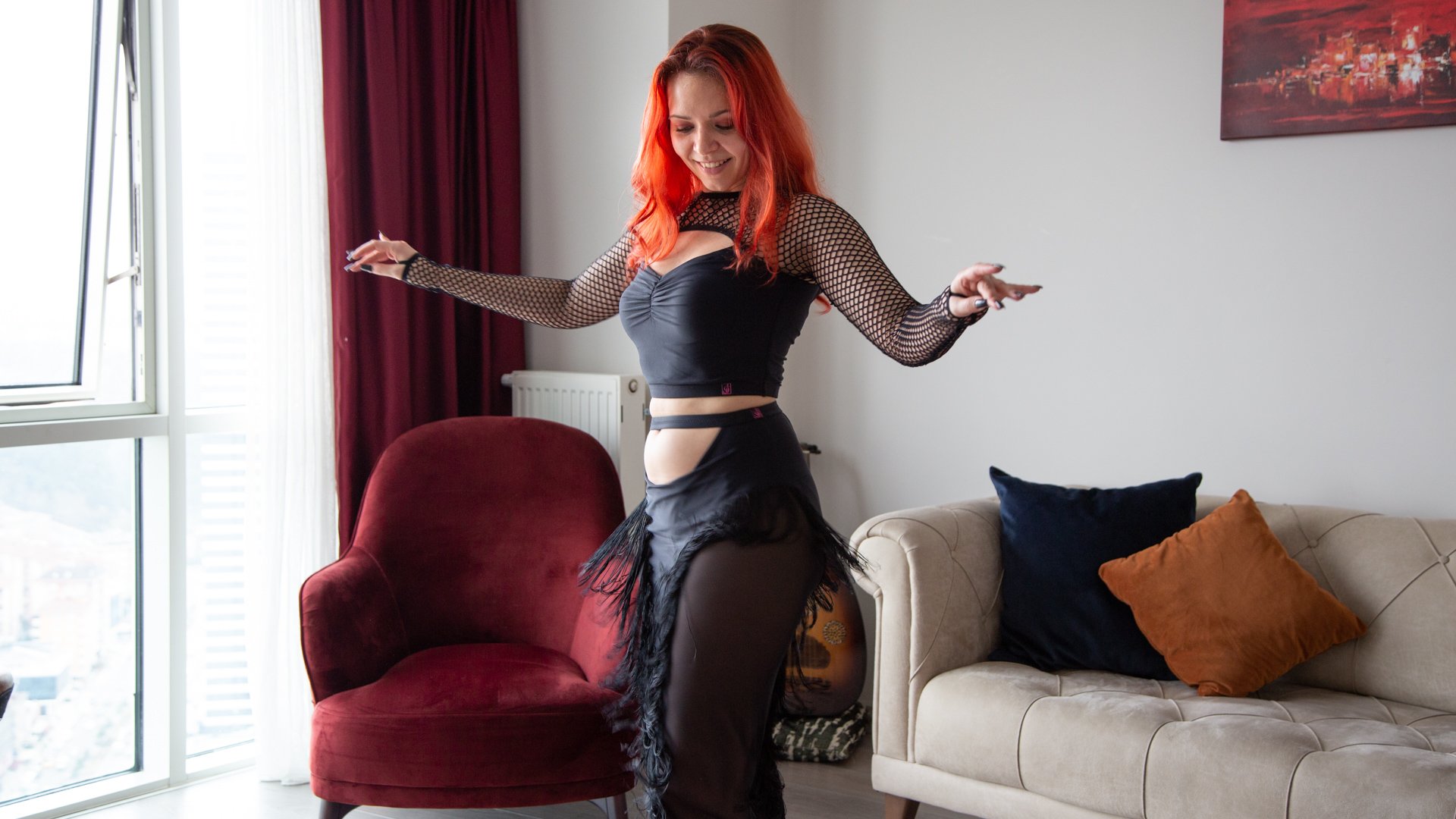Checkpoints For Successful Knee Shimmy
Here is a list of checkpoints that you can use to monitor your shimmy technique. I would recommend to use both mirror and self-video recording to make sure you don't miss anything.
I consider a loose knee shimmy as one of the trickiest movements in belly dance. I know you may be surprised, since it is part of the basic vocabulary, but there are many hidden traps that prevent dancers from doing this movement correctly.
Here is a list of checkpoints that you can use to monitor your technique. I would recommend to use both mirror and self-video recording to make sure you don't miss anything:
Make sure you are not shimmying on bent knees. Don't confuse it with a hip shimmy when your starting position is in a small plié. On the contrary, the knee shimmy starts with straight legs, and there is a visual difference between one knee bent and other one straight.
Check out a 3-week intensive on the technique of Egyptian Shimmy at the Iana Dance Club. Click HERE for more info.
Don't overextend your knees. Yes, as I've mentioned in the previous point, we do extend our knees during this shimmy, BUT don't push back. There is a difference between a fully straight knee, when you feel your joint sort of 'locked', and a relaxed starlight knee, when visually your leg is straight, but your knee still has some space to extend even further. So, we do NOT want to go to a fully extended locked knee, but want to remain in this relaxed straight position. It will ease the tension in the shimmy itself, as well as help to avoid potential injuries.
Keep it relaxed. If you feel that your hips and legs become tensed, there is a risk that you've switched to a vibration shimmy. During execution of a knee shimmy our body is fully relaxed. Otherwise you won't be able to reach the necessary range of motion in your knees. Use your breath to release any tension or locks.
Slow down. This may sound strange. Isn't shimmy supposed to be fast? Well, the secret of a juicy knee shimmy is not in speed. It's in range of motion. Resist the tendency to speed up. You should be able to control your body, not vise versa.
Don't sink into your hips. Make sure your back and core muscles are engaged and support your upper body. Otherwise you are just adding unnecessary load on your knees, and rob yourself from freely moving them.
Develop range of motion. There should be a significant difference between bent and straight knees. If you don't see it, you are most likely doing a vibration shimmy, but not a nice loose knee shimmy.
Find your position. Experiment with the width of your legs, weight placement, and position of your feet (parallel, or slightly turn out). Everyone will have different preferences.
Check your posture. Avoid curving your lower back, because it messes up all shimmy techniques, and may cause injuries in the long term.
If you enjoyed this article, don’t forget to like and share! :)
Author: Iana Komarnytska
Photographer: Pedro Bonatto
YOU MAY ALSO LIKE:
LISTEN TO THE BELLY DANCE LIFE PODCAST:
About Iana
Iana Komarnytska is a professional dancer, teacher, choreographer, and passionate content creator helping dancers navigate their dance lives.
She is a graduate from the professional dance program at York University (Canada), host of the Belly Dance Life podcast, creator of the Iana Dance Club, author of numerous articles, and winner of Star Bellydancer Canada 2014 among other international competitions.
Along with belly dance, Iana performs and teaches Persian Classical and Turkish Romani dancing. She is the first choreographer to start using Triple Isis wings, and since 2012 this is one of her style signatures.









Do you know the difference between knees and hips shimmy? 🤔🤔🤔 They look very similar, but there are actually different movements.